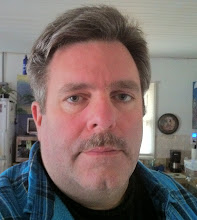Society and culture is often defined by it’s writing. We live in perhaps the most exciting time with regard to literature in that our ideas can be transmitted globally through the internet. As a result, our cultural ideas can be spread through the mere pressing of a button. If someone were to wish to understand what we were writing about and did not know how to speak English, they could easily translate what we have written into their native tongue through one of many translation programs available online. But culture is not so easily transcribed. The culture of a people varies through time and region. If we look at our own culture, we can break it down into individual co-cultures with labels such as, American, Northeastern, African-American, Neo-Conservative, Etc.
What gives us a more concise view of a particular culture is through their art. Expressions of self through painting, and poetry in particular, present a snapshot of an individual immersed in the cultural expression of the self in a cultural context. We can gather a sense of who a people are by the transmission of their aspirations of creativity, love, desire, and intellect in the contextual arrangements of their presentations. Through the use of poetry as an expressive medium of the written idea, understanding emotion beyond visual observation, and description has evolved and digressed through time. By looking at poetry we can feel a connection across time, as we translate the emotions of a person within their cultural context. We relate our own life experiences to their expression of self through their poetry, and weigh the depth of their emotional expression against our own.
Often times this expression of emotion fits directly into our culture’s current value systems, and when this happens we describe such emotional expressions as, “Timeless.” When we stop to consider how complex human emotions are, and we see how tumultuous societies are today, people tend to look to the past as an emotional oasis. We delude ourselves to believe that people in the past had life so much easier. We have a tendency to believe that their emotions were simple and pure, because they didn’t have the complexities of life today. Quite the opposite was the truth, however. Our current societies have made life for us immeasurably simple, compared to people in the past. We have gained the ability to gather and process information over the past hundred years with amazing speed. We have therefore had the capacity to express ourselves with amazing speed as well. And sometimes we think of our expressions of emotion as unique, when in fact human emotion has changed very little throughout time. The cultural context has changed, but the emotions of love and desire have not changed at all.
In searching for poetry to demonstrate this idea, a good example of this includes poetry with homoerotic themes. Relationships between men have been abundantly expressed throughout time in writing and poetry. Expressions of sexual desire between men are very rare to come by outside of dedicated collections of homoerotic themed literature and poetry. These are not the relationships between men, which are made example of in our textbooks. And this is an example of the shortcomings of our current society. We have a tendency of putting a stamp of taboo on this subject. When it comes to basic study of ancient literature, we try not to muddy the waters with such topics, as our current society has a tendency to be puritanical / patriarchal in ideal, while we certainly are far from such in reality. Homoerotic poetry does not fit in with our delusion of ancient societies being simple and somewhat pure, so we turn a blind eye to examples of poems with homoerotic subjects. Even more obscure are works of literature with female same gender loving topics.
Culturally humanity was quite different with regard to free expression in the past. Currently we have terms such as Gay, and Homosexual, to describe a carved out category of society. This is because we enjoy putting people in categories, for some reason. He’s Gay. She’s a Lesbian. It’s easy for us to label ourselves based on the core of our sexual being. However, as we learn more and more about ourselves, understanding human sexuality is more like a spectrum rather than a category. And spectrums don’t fit into boxes.
Passions of the Cut Sleeve
The Male Homosexual Tradition in China, by Bret Hinsch
(University of California Press 1990), a compilation of Chinese poetry exploring what is known today as a bond between two men related through poems. In The "Poetical Essay on the Supreme Joy of the Sexual Union of Yin and Yang and Heaven and Earth" ("Tiandi yinyang jiaohuan dale fu"), by Bo Xinjian (d. 826), a manuscript describing the wide spectrum of sexuality from his point of view, taken down by a scribe, homosexual relationships are included. It’s interesting to consider with Chinese literature and poetry, stating the obvious is considered crude. Therefore getting to the point of the nature of the poems are often difficult, unless the context of the culture is known. Homosexuals are described by what they wear, rather than simply stating that they homosexual as such.
Saturday, October 10, 2009
Subscribe to:
Post Comments (Atom)

No comments:
Post a Comment